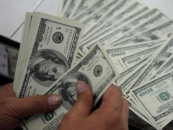The week in focus
Sugar millers have expressed their inability to set up power plants across the country.

About a week ago, the issue of power generation by sugar mills cropped up again in a meeting of the National Assembly’s standing committee on water and power, where the Water and Power Development Authority (Wapda) was directed to persuade the millers to go for power production.
This comes at a time when Pakistan faces acute energy shortages, thanks to swelling inter-corporate debt in the vicinity of Rs300 billion and lack of power reforms to check unbridled line losses and theft.
In the summer season this year, the electricity shortfall widened to about 5,000 megawatts, prompting power suppliers to resort to four to five hours of outages in cities and supply cuts exceeding 10 hours in some rural areas.
About six months back, sugar millers had been enthusiastic about the idea and planned to send a delegation to the United States to inspect the plants and equipment needed by them. But the enthusiasm died down later, partly blamed on disagreement over the tariff offered to the mills.
Under the concept, bagasse – a byproduct of sugarcane – will be used as fuel for producing electricity. At present, the product is utilised for manufacturing paper and chipboard. According to a sugar miller, the mills will have to import new pressure boilers and turbines for generating electricity from bagasse.
Not feasible
“It is not a viable venture at present because liquidity is tight in the banking industry and banks do not have much to offer. In addition, they demand around 17 per cent mark-up on loans,” said Pakistan Sugar Mills Association Chairman Javed Kayani.
The sugar industry needs a massive investment of around $2 billion to install plants and equipment for producing power, but Kayani did not seem optimistic that banks will provide such financing.
He said the government is offering a tariff of 9.28 cents per unit to the mills compared with the industry’s demand of 11 cents. On the other hand, rental power plants are being offered tariffs between 19 and 21 cents.
“The tariff should be linked to the exchange rate, sugarcane and bagasse prices. Sugar mills have the potential to generate 2,000 megawatts of electricity.” The government should give preference to domestic resources instead of seeking outside assistance to meet its needs, Kayani suggested.
Facilitation
BMA Capital analyst Nurali Barkatali was of the view that the government would facilitate provision of loans to sugar mills and expected the plan to prove feasible.
Under the rules, private power producers can borrow up to 80 per cent of the cost of the project and the remaining 20 per cent has to be injected in the form of equity. In this regard, he cited the examples of newly set-up power plants – Nishat Chunian Power and Nishat Power – and the upcoming Hub Power Company’s Narowal plant.
“Loans and mark-up are part of the power tariff offered by the government and the plan seems workable,” he said. Besides, the government enters into a 25-year agreement with private owners of at least a 100-megawatt plant for purchase of electricity.
However, hydropower is still quite cheaper, costing only 60-70 paisa per unit, Barkatali said, referring to October figures. Gas-fired power costs Rs3.4 per unit while plants based on residual fuel oil (RFO) produced electricity at a price of Rs10.21 per unit. Consequently, average price for generating a unit of electricity comes to Rs4.8.
Published in The Express Tribune, December 6th, 2010.



















COMMENTS
Comments are moderated and generally will be posted if they are on-topic and not abusive.
For more information, please see our Comments FAQ